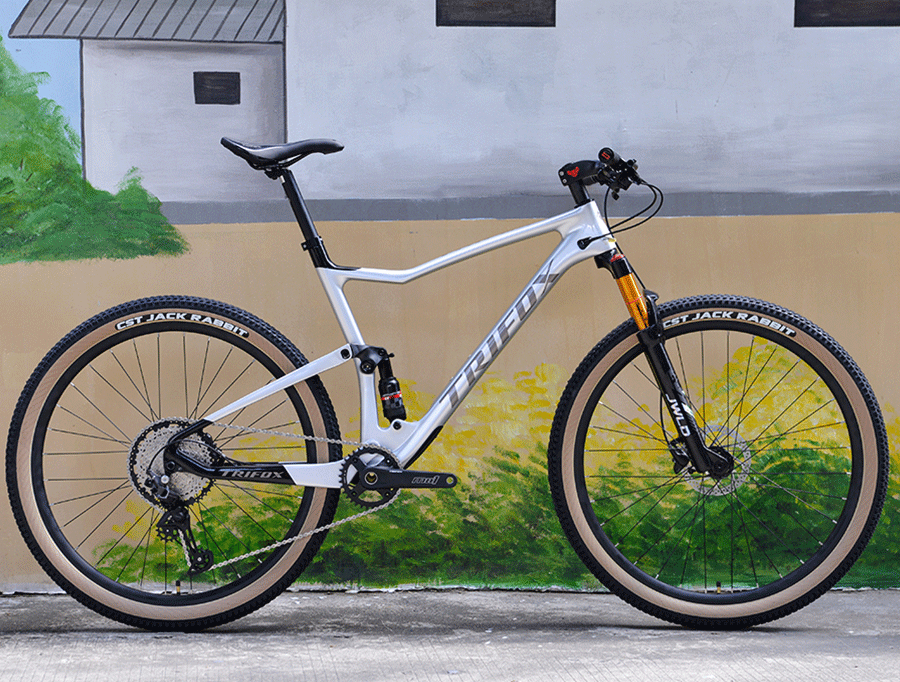
Mountain biking has always been an exciting and challenging sport that requires top-of-the-line gear to keep up with its demands. Choosing the right MTB frame can be daunting, but Trifoxbike might just have the solution you need. Their lineup of MTB frames includes a wide variety of choices, each designed to deliver exceptional performance and durability. In this blog post, we'll take a closer look at their products and help you choose the best Chinese MTB frame that suits your needs. Carbon fiber full suspension mountain bike frame MFM100 The MFM100 is a top-of-the-line carbon fiber full suspension frame that's designed for off-road enthusiasts seeking exceptional performance and durability. It features a high modulus carbon fiber construction that makes it lightweight while maintaining a sturdy and reliable build. Its rear suspension delivers around 100mm of travel, giving you the comfort you need on rough terrains while maintaining good pedaling efficiency. The frame is compatible with a boost 148 rear hub and a fork with 110mm boost spacing. Carbon hardtail bike frame SDY20 If you're looking for a lightweight and performance-oriented bike frame, the SDY20 might just be the perfect choice for you. The frame weighs only 980g (S-15'') and 1050g (M-17''), making it one of the lightest frames available in its class. Its geometry is specifically designed to boost your confidence on any terrain, giving you the agility and responsiveness you need to tackle challenging tracks. The frame is compatible with a Boost 12*148 rear hub and a 100mm suspension fork. Carbon 29er mountain bike frame SDY21 The SDY21 is a 29er carbon fiber hardtail frame that offers both durability and flexibility. Its carefully crafted geometry accommodates 29er*2.1" wheels, giving you the confidence to tackle rough terrains. The frame is designed to swap between Quick Release and Thru-Axle (135QR, 142TA, 148 boost), giving you more versatility when it comes to choosing your wheelset and giving you better control on the trail. Carbon fiber 29er frame MFM200 The MFM200 is another 29er carbon fiber hardtail frame that's designed to give your bike an edge on the trails. Its sleek design accommodates 29er*2.1" wheels, delivering the agility and versatility you need to conquer any terrain. With a weight of 1050g (M size), this frame is one of the lightest available, making it a great choice for riders who are looking to have an agile and nimble feel on their bike. The frame is compatible with a Boost 12*148 rear hub and a 100mm suspension fork. Conclusion: Choosing the best Chinese MTB frame can be a daunting process, but Trifoxbike's lineup of frames offers a wide range of choices that deliver exceptional performance and durability. If you're looking for a full suspension frame, the MFM100 is a great option that offers around 100mm of travel, making it ideal for more demanding terrains. On the other hand, if you're looking for a lightweight hardtail frame, the SDY20 and MFM200 both deliver exceptional performance, with the SDY20 being one of the lightest hardtail frames available. Finally, if you're looking for versatility, the SDY21 can be swapped between Quick Release and Thru-Axle, giving you more options when it comes to choosing your wheelset. Whatever your needs might be, Trifoxbike has a frame that'll fit you perfectly.
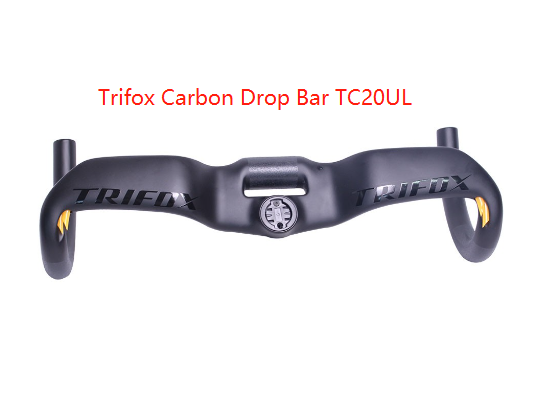
For avid cyclists, every component of their bike plays a crucial role in their cycling experience. From the frame to the wheels, every piece contributes to overall performance and comfort. One often overlooked feature, however, is the drop bar. Cyclists typically use traditional drop bars, which offer a limited range of hand positions, which can cause discomfort and pain during long rides. But with the advent of integrated drop bars, cycling has reached a new level of comfort and performance. In this blog post, we’ll delve into the details of integrated drop bars, their features and benefits and how they can revolutionize your cycling experience. Integrated drop bars are a relatively new innovation in cycling technology. They allow riders to switch between comfortable and aggressive positions without compromising on speed or aerodynamics. The carbon fiber aero drop bar C20UL, for instance, has a sleek and compact design that offers a variety of hand positions. This means you can shift your wrist angle or grip position as per how you feel at any given time, without having to slow down or stop. Integrated drop bars offer enhanced stability during both downhill rides and high-speed turns. This is because they allow the rider to feely adjust their position on the bike, which in turn enables better weight distribution. With traditional drop bars, riders are limited to one hand position, which can cause instability and discomfort. But with integrated drop bars, riders can seamlessly shift their grip positions and adjust their weight distribution, which results in greater stability and control. Integrated drop bars also come with advanced features that enhance your cycling experience, such as AERO break wind design and a stopwatch bracket. These features improve aerodynamics and help you to monitor your performance in real-time. The Uplift style of the TC20UL aero drop bar, for example, offers unparalleled aerodynamics, which reduces wind resistance and enhances speed. When it comes to aesthetics, integrated drop bars are unrivaled. Thanks to their sleek carbon fiber finish and smooth contours, these drop bars not only perform exceptionally well but they also look great. Frankly speaking, the integrated drop bars are a statement of class and style. In conclusion, integrated drop bars are a game-changer in cycling technology. They offer a range of hand positions, enhance stability and control, improve aerodynamics, and look great on the bike. If you’re an avid cyclist, you need to try out integrated drop bars and experience the difference they make. Visit a local bike shop, and you'll be amazed at the variety of styles and options on offer. Integrated drop bars are the future of cycling, and you don't want to be left behind. So get one and revolutionize your cycling experience today!
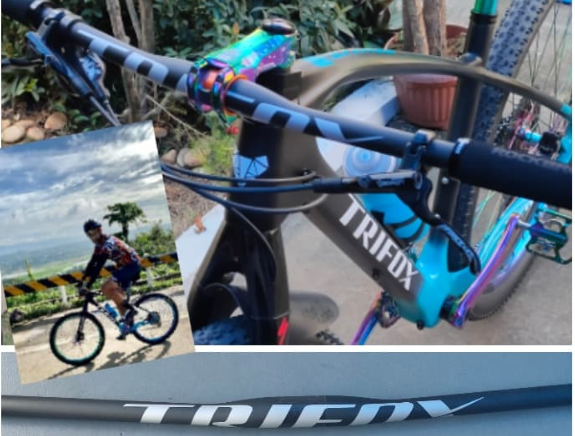
Riding a bike, no matter the type, can be an incredibly liberating and exhilarating experience. However, if you're not equipped with the right bike handlebars, you can quickly find yourself losing control of the bike, especially when you're pushing the bike to its limits. Fortunately, Trifox Bicycle bars offer exceptional control and handling, giving you the peace of mind and confidence you need to tackle any situation. At Trifox, we offer a broad range of handlebars suitable for any biking style, including road, mountain, and track. One of our most popular handlebars is the Trifox Carbon Fiber Road Handlebar. We've designed this handlebar to provide superior control and handling, mounted in an ergonomic shape that will keep your hands feeling comfortable on long and demanding rides. The handlebar is made using the highest quality carbon fiber material, making it lightweight and strong so that you can handle any trail you take on. When you're looking for exceptional control and handling, the Trifox Carbon Fiber Mountain Bike Handlebar is the perfect solution. Whether you're a beginner or an experienced rider, this handlebar offers the durability, strength, and stiffness you need to tackle any challenge. The handlebar features an ergonomic design that is easy to maneuver in all conditions, giving you complete control over the bike's performance. As with all Trifox Bicycle bars, the carbon fiber material used in this handlebar is lightweight, making it easy for you to handle rough terrains and long rides. Trifox Bicycle bars are also perfect for those who love racing on the track. Our Trifox Aero Carbon Fiber Track Handlebar offers precision craftsmanship, with a design that is both aerodynamic and visually striking. The handlebar is available in a variety of sizes, so you can choose the best size for your biking style and body type. With Trifox Bicycle bars, you won't have to worry about any discomfort or impediments while racing; you can focus on your performance and winning the race. If you're someone who likes to customize their bike, we also have a range of handlebars that allow you to customize your biking experience. For example, the Trifox Carbon Fiber Integrated Road Handlebar and Stem combinator offers superior stiffness and handling, along with an integrated stem that allows you to reduce the overall weight of your bike. Additionally, our Trifox Carbon Fiber Flat Handlebar offers a unique combination of comfort and style, with a flat design that's ideal for riding in urban areas. Conclusion: Whether you're a seasoned pro or just starting, Trifox Bicycle Bars offer unmatched control, durability, and handling. As world leaders in handlebar design and manufacture, Trifox continues to provide bikers with the ultimate biking experience. No matter where you're riding or what style of biking you enjoy, Trifox Bicycle Bars offer the perfect combination of functionality, style, and performance. So, if you're serious about biking, consider making the switch to Trifox Bicycle Bars and experience the ultimate biking control like never before!
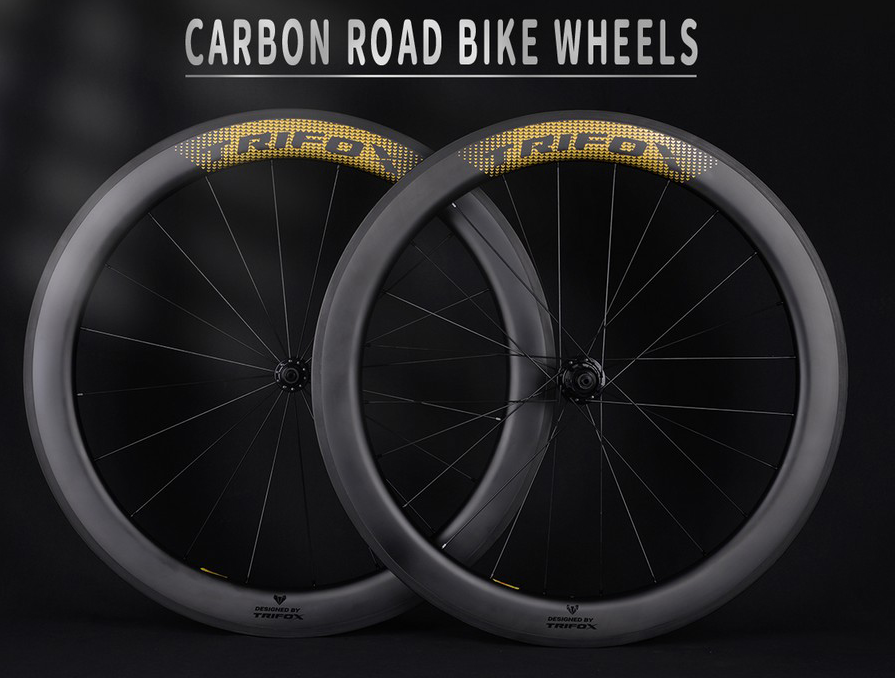
Bike wheels are one of the most crucial components of any bicycle. In fact, your bike wheels will affect your overall riding experience more than any other component. As such, it's essential to choose the perfect set of carbon wheels for your bike. In this blog post, we'll dive into the world-renowned Trifox Carbon Wheel Set. 1. Lightweight and Durable Build The Trifox Carbon Wheel Set is designed with a lightweight carbon fiber that gives the wheels a remarkable weight-to-strength ratio. The lightweight build reduces the overall weight of your bike, which translates to a more effortless ride. Additionally, the carbon fiber material used to develop these wheels offers maximum durability, ensuring that the wheels can withstand even the toughest road conditions. Their durability means that you can confidently use your Trifox Carbon Wheel Set on any terrain without worrying about wear and tear. 2. Enhanced Aerodynamics Design The Trifox Carbon Wheel Set is specially crafted with aerodynamics in mind. With the unique design, these wheels offer a significantly lower drag coefficient than other conventional wheels. This feature provides a faster and smoother ride, especially when cycling at high speeds. The aerodynamics of the wheels have been tested in wind tunnels, confirming Trifox's commitment to delivering top industry performance. 3. Improved Braking and Stability Trifox integrates a unique braking surface, making the Trifox Carbon Wheel Set one of the best when it comes to braking performance. This feature means that the rider has more control and stopping power, reducing the possibility of accidents. Additionally, the wheels feature a unique rim profile that grants maximum stability, ensuring that the rider feels safe even when navigating tricky terrain. 4. Wide Range of Options Trifox offers a wide range of options for the Trifox Carbon Wheel Set, making them perfect for bikers with different needs. The wheels come in various sizes, allowing you to choose the perfect set of wheels that fit your bike. With rim depths ranging from 38mm to 86mm and options to choose between disc or rim brakes, you can find a Trifox Carbon Wheel Set that meets your cycling needs. Conclusion: In conclusion, the Trifox Carbon Wheel Set is undoubtedly a set of wheels that you should consider if you're looking to enhance your bike's overall performance. With their lightweight build, enhanced aerodynamics design, versatility on all terrains, improved braking and stability, and vast range of options, Trifox Carbon Wheel Set is an excellent investment for amateur and professional cyclists looking for the best performance. Don't wait any longer to improve your cycling experience; get yourself a Trifox Carbon Wheel Set today.
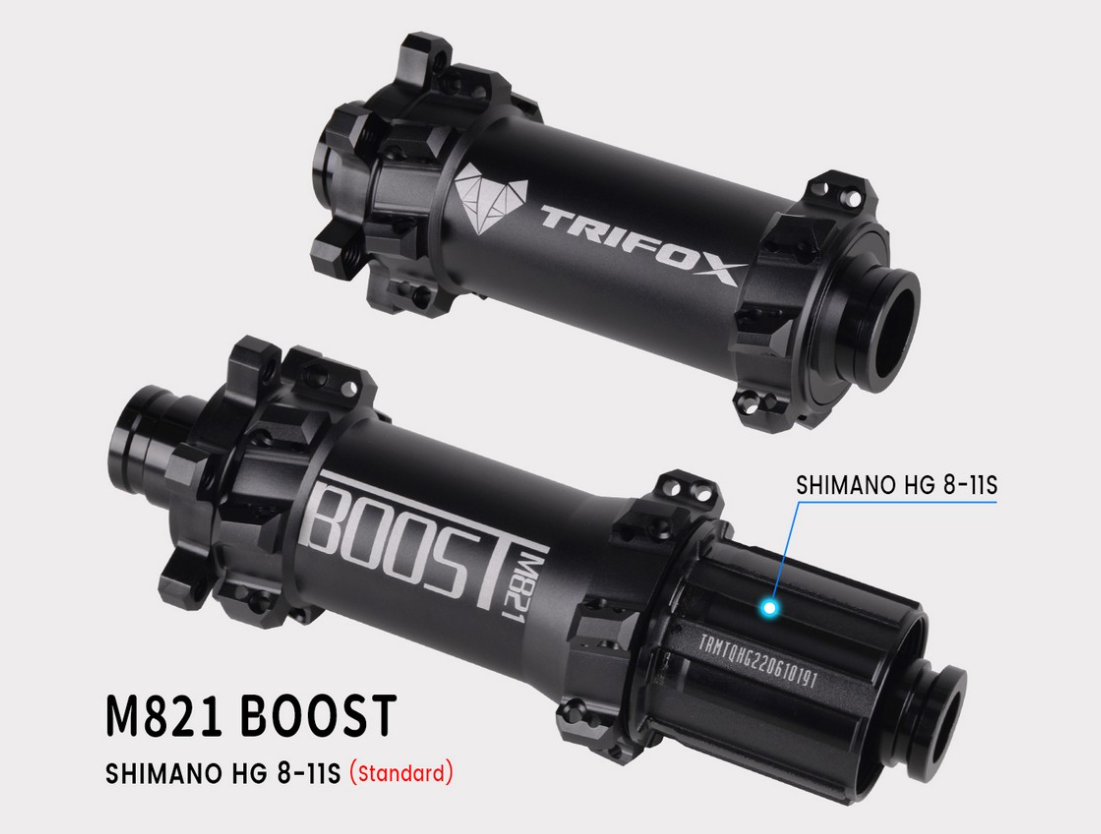
Biking is one of the most common outdoor activities that people do for leisure or health purposes. Some even take it to the next level by joining biking competitions, exploring terrains, and challenging their physical limits. Regardless of the reason, it is vital to make sure that the bike is in its best condition for a smooth and safe ride. One of the things that matter in ensuring the smooth ride of a bike is the flange spacing. Firstly, what is a flange spacing? Flange spacing usually refers to the distance between the two flanges, which are the round metal pieces located on each side of the bike's wheels. The hub, which is responsible for the attachment of the spokes to the wheel, bolsters these flanges. Generally, the hub of a bike is the midpoint of the flanges, and the spokes add more structure to the overall system. The flange spacing of a bike is crucial as it maximizes the tension of the spokes, which prevents loose wheels. Secondly, the flange spacing affects the bike's overall stability and durability. When the flange spacing is not appropriately set, it causes the spokes to loosen up, which makes the wheel wobble. This issue can compromise the balance of the bike and its ability to keep straight on roads, especially on bumpy and rough terrains. Additionally, a loose spoke can cause damage to the wheel rim, resulting in deformation and eventually failure over time. This can be quite dangerous, especially when the rider is going at high speeds. Therefore, the correct spacing of the flanges can contribute to the bike's overall durability and the safety of the rider. Thirdly, bike manufacturers usually have different flange-spacing standards for different bike types. For instance, mountain bikes have wider flange spacing than road bikes. This is due to the fact that mountain bikes are built to withstand rough terrain and heavy impact, while road bikes are designed for smooth pavement and speed. Therefore, when purchasing a bike, it is essential to check the flange spacing and consider your use and preference to avoid any inconvenience or safety hazards. Fourthly, the number of teeth on the bike's wheel also affects the flange spacing and the overall performance of the bike. The teeth determine the amount of distance covered by each pedal stroke, which is referred to as the gear ratio. A higher gear ratio means there is more distance covered per pedal stroke, resulting in more power and speed. On the other hand, a lower gear ratio means less distance and slower speed but better control. Therefore, when choosing the number of teeth for your bike, you should consider your terrain, fitness level, and experience. In conclusion, the flange spacing is an essential aspect of the bike that contributes to its overall stability, safety, and durability. It is specifically designed according to the bike type, and incorrectly set flanges can compromise the whole system. As a rider, it is crucial to check the flange spacing before purchasing a bike, as it can affect your overall biking experience and safety. The right flange spacing, together with the appropriate gear ratio, makes for a smooth and enjoyable ride. Therefore, when taking on a bike challenge, keep in mind the importance of flange spacing and ensure that you have the correct system.
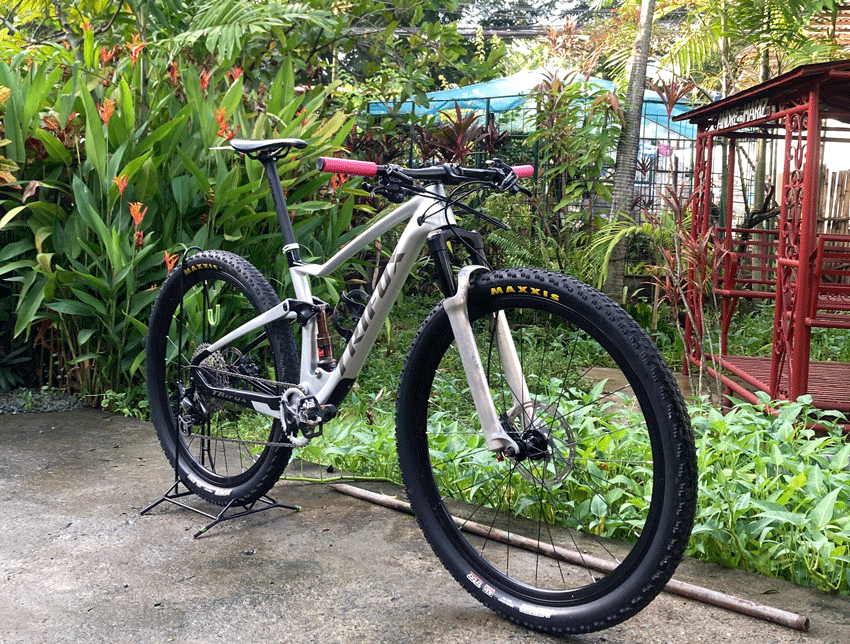
As a serious mountain biker, you know that having the right bike makes all the difference when it comes to performance and durability. One of the best ways to upgrade your bike is by investing in a high-quality carbon fiber frame. If you’re looking for the best Chinese full suspension carbon frame on the market, you won't find a better option than the Trifox Carbon Fiber Mountain Bike Frame MFM100. In this blog post, we’ll take a closer look at this impressive frame and the features that make it stand out from other frames on the market. 1. High-Quality Construction The Trifox Carbon Fiber Mountain Bike Frame MFM100 is crafted from high-quality T800 carbon fiber. This material is renowned for its strength, rigidity, and lightweight construction. With this frame, you'll enjoy the perfect balance of strength and agility, enabling you to easily tackle tricky trails and challenging terrain with ease. Because of its lightweight construction, you can also expect to experience a significant reduction in the overall weight of your bike, resulting in improved performance and a more enjoyable riding experience. 2. Boost Design The MFM100 frame features a Boost design with 148 x 12mm spacing. This innovative design allows for a stronger and stiffer rear wheel, which can better handle rough terrain and extreme conditions. You also have the freedom to accommodate up to a 2.35" tire size and enjoy ample tire clearance, which enables you to confidently tackle various off-road trails with ease. 3. 29er Wheels The MFM100 frame features 29er wheels, which are known for their precision and agility. These wheels offer excellent maneuverability and control, allowing you to navigate the most intricate trails with ease. Whether you’re a seasoned pro or a beginner, these wheels are sure to impress you with their responsive handling and outstanding performance. 4. Head Tube Angle The MFM100 frame also boasts 68.5°Head Tube Angle headset cups, providing the flexibility to fine-tune your bike's geometry for optimal handling. You can easily adapt the bike's geometry to your specific preferences, ensuring a personalized riding experience that's tailored to your needs. This allows you to have greater control and maneuverability over the bike, making it easy to tackle any kind of terrain. 5. Boost Technology The Boost technology featured on the Trifox Carbon Fiber Mountain Bike Frame MFM100 offers a 148 x 12mm spacing, which enables wider hub flange separation. This results in a potentially stronger and more rigid rear wheel for enhanced performance. With Boost technology, you can enjoy better control and traction, better acceleration, and greater maneuverability even in the toughest terrain. In conclusion, if you're looking for a highly durable and performance-oriented mountain bike frame, the Trifox Carbon Fiber Mountain Bike Frame MFM100 is worth considering. With its high-quality construction, Boost design, 29er wheels, and Head Tube Angle, you can enjoy unbeatable performance and unmatched durability. Whether you're a seasoned pro or a beginner, this frame is sure to impress you with its outstanding features, allowing you to take on any kind of terrain with confidence and ease. So why wait? Invest in this state-of-the-art bike frame today and get ready to enjoy a thrilling and unforgettable mountain biking experience.
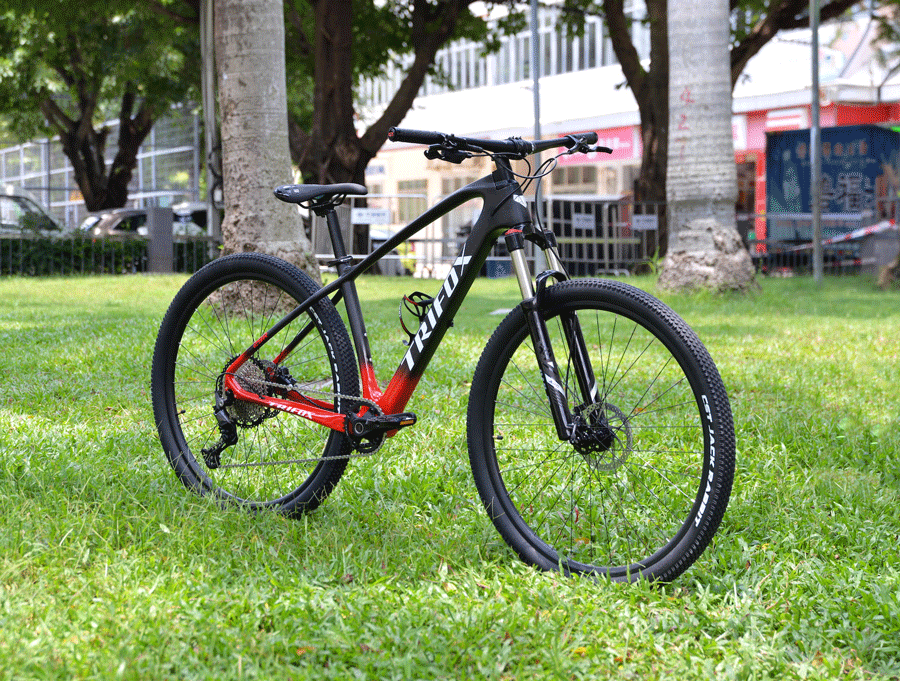
The bicycle frame plays a crucial role in determining the performance, comfort, and overall riding experience of a cyclist. Every cyclist, from beginners to professional riders, understands the importance of having a good quality frame that can withstand the rigors of cycling. In this blog post, we will take an in-depth look at why bicycle frames are so important in cycling performance. 1. Frame Material: The material of the bike frame determines the weight, strength, and stiffness of the bicycle, which directly affects its handling and performance. The most common frame materials used in cycling are steel, aluminum, titanium, and carbon fiber. Steel frames are known for their strength and durability, but they are also heavy and less responsive than other materials. Aluminum frames are lighter than steel and provide a more responsive ride, but they also tend to be stiffer and less comfortable. Titanium frames are durable and lightweight, but they are also expensive. Carbon fiber frames are the most popular among professional cyclists due to their lightweight, stiffness, and strength. Carbon frames provide excellent vibration damping, making them more comfortable over long rides. For example Trifox carbon fiber bike. 2. Frame Geometry: The geometry of the frame plays a vital role in determining the bike's comfort, stability, and handling. The frame's angles, tube lengths, and heights affect the rider's riding position, weight distribution, and overall balance. For example, a road bike has a more aggressive geometry that requires the rider to lean forward, while a mountain bike has a more upright position that allows the rider to sit more comfortably. The frame geometry also affects the bike's stability and handling on different terrains, corners, and speeds. 3. Frame Design: The frame design involves the shape, thickness, and welding technique of the frame. A well-designed frame can provide lateral stiffness for a better power transfer, vertical compliance for more comfortable rides, and excellent aerodynamics for faster speeds. For example, aero frames are designed to reduce wind resistance and minimize drag, making them popular for time trial riders and triathletes. The type of welding technique used also affects the frame's durability and strength. A good quality frame should have clean and smooth welds in critical stress points. 4. Compatibility and Customization: Another important aspect of bike frames is their compatibility with other components such as wheels, brakes, and drivetrain. A good quality frame should allow for easy customization and upgrades to accommodate the rider's needs and preferences. The frame should also be compatible with different wheel sizes, tire widths, and suspension systems for different terrains and riding styles. 5. Overall Performance: In summary, the bike frame plays a critical role in determining the overall cycling performance, comfort, and riding experience. A well-designed frame made from good quality materials can provide excellent stiffness, strength, and vibration damping, allowing for better power transfer, comfort, and speed. The frame geometry and design influence the bike's stability, handling, and aerodynamics, making it suitable for different riding styles and terrains. A good quality frame should also allow for easy customization and upgrades to fit the rider's individual needs and preferences. Conclusion: Choosing the right bike frame is critical for achieving optimal cycling performance and comfort. The frame material, geometry, design, compatibility, and customization options all play a vital role in determining the bike's overall performance. Investing in a good quality frame that suits your individual needs and riding style is crucial for maximizing your cycling experience.
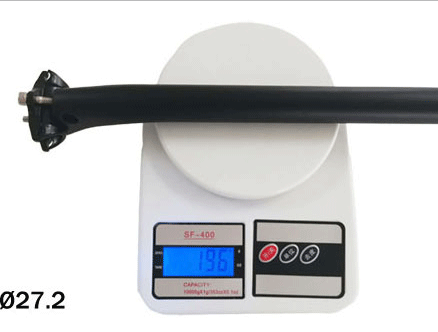
As cycling has become a popular mode of transportation and leisure activity, more and more people are investing in bicycles. While choosing the right bike is crucial for a comfortable ride, the importance of selecting the right bike seat pole should not be overlooked. The right bike seat pole helps to ensure that the bike fits your body correctly and mitigates unnecessary discomfort. In this blog post, we will discuss the importance of selecting the right bike seat pole. 1. Comfort One of the main reasons why selecting the right bike seat pole is essential is to ensure a comfortable ride. A poorly chosen bike seat pole can create discomfort in your back, knees, and neck, leading to a painful riding experience. A good bike seat pole, such as the Trifox Carbon Layback MTB Seatpost CDS100, helps mitigate the impact of rough terrain and reduces the vibration that transfers from the road to your body, ultimately resulting in a more comfortable ride. 2. Durability Bike seat poles made from inferior quality materials such as aluminum or steel can be susceptible to rust and corrosion. This can lead to a reduction in performance and a shorter lifespan for the bike seat pole. The Trifox Carbon Layback MTB Seatpost CDS100 is made from carbon fiber T800, which has excellent fatigue and corrosion resistance, making it a highly durable product. 3. Weight Bike enthusiasts know that every gram counts when it comes to performance. The Trifox Carbon Layback MTB Seatpost CDS100 is a light product weighing only 190 grams, making it an excellent choice for racing enthusiasts. The carbon fiber material is known for its ability to reduce weight without sacrificing durability, making it a winning combination. 4. Style While choosing the right bike seat pole is primarily about function over fashion, it's always a bonus when you can find a product that's both. The Trifox Carbon Layback MTB Seatpost CDS100 has a sleek and stylish appearance, with a UD matte finish and a black color that will complement any bike design. 5. Customizability Different riders have different seat-height preferences, which is why the Trifox Carbon Layback MTB Seatpost CDS100 offers two diameters of seatpost, Φ27.2mm, and Φ31.6 mm. This customization allows riders to choose the option that best suits their body frame and bike design. Choosing the right bike seat pole is a crucial element in ensuring a comfortable and enjoyable ride. When selecting a seat post, consider factors such as comfort, durability, weight, style, and customizability. The Trifox Carbon Layback MTB Seatpost CDS100 ticks all these boxes and is an excellent option for any rider looking for a combination of comfort, performance, and style.
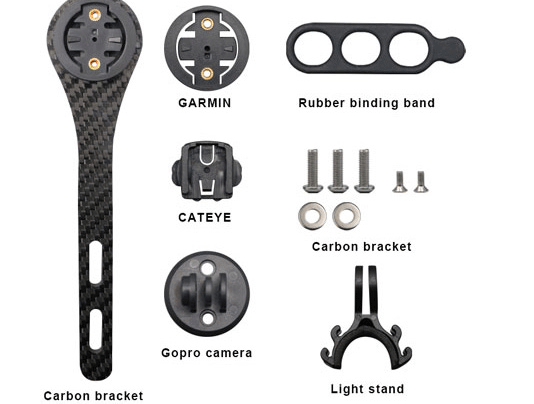
As a cyclist, having the right gear is essential to ensure a safe and comfortable ride. One of the most important pieces of equipment is the bike computer, which helps track your speed, distance, and other important metrics. However, finding the perfect mount for your bike can be a challenge. Enter the Trifox Carbon Handlebar Computer Mount SBH100 – a game-changing accessory that has set a new standard for cycling enthusiasts everywhere. In this blog post, we will explore the benefits of this state-of-the-art bike computer mount. Firstly, let's consider the design of the Trifox Carbon Handlebar Computer Mount SBH100. Made with 3K carbon fiber weave, this mount is not only visually appealing but also incredibly durable. The material used in the construction of this mount makes it resistant to impact and wear and tear caused by environmental factors. Hence, it is built to last long and stand up to tough riding conditions. Another important feature of the Trifox Carbon Handlebar Computer Mount SBH100 is its compatibility with several bike models and computers. This mount is perfect for the Garmin, viGPSPORT, Blackbird, Cat Eye, and Bryton computer models, making it convenient for riders who use any of these computer brands. The mount fits valve diameters of approximately 28.6mm / 1.1 inches, making it suitable for most bikes and handlebars. The Trifox Carbon Handlebar Computer Mount SBH100 is designed to be both lightweight and easy to install, making it the perfect accessory for avid cyclists. The mount comes with an easy-to-use locking system that ensures the computer stays in place even while biking on rough terrain. Its aerodynamic design helps to reduce wind resistance and drag, which ultimately enhances the riding experience. The Trifox Carbon Handlebar Computer Mount SBH100 is not only functional but also stylish. You can now upgrade your bike’s aesthetics with this sleek and sophisticated mount. It has a modern design that blends seamlessly with your bike's handlebars. The mount’s appearance enhances the overall look of your bike while providing an effective platform to mount your computer. In conclusion, the Trifox Carbon Handlebar Computer Mount SBH100 is the ultimate bike accessory that every cyclist needs. It is a perfect combination of durability, compatibility, convenience, and style – something that every rider longs for. The mount is perfect for those who prioritize ease of installation and want a sturdy, reliable mount that can withstand rough riding conditions. Upgrade your bike’s accessory game with the state-of-the-art Trifox Carbon Handlebar Computer Mount SBH100 today!

















